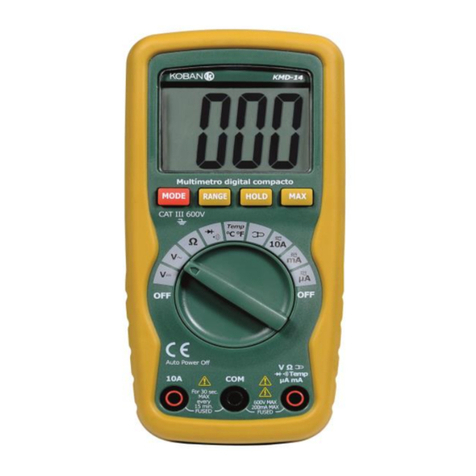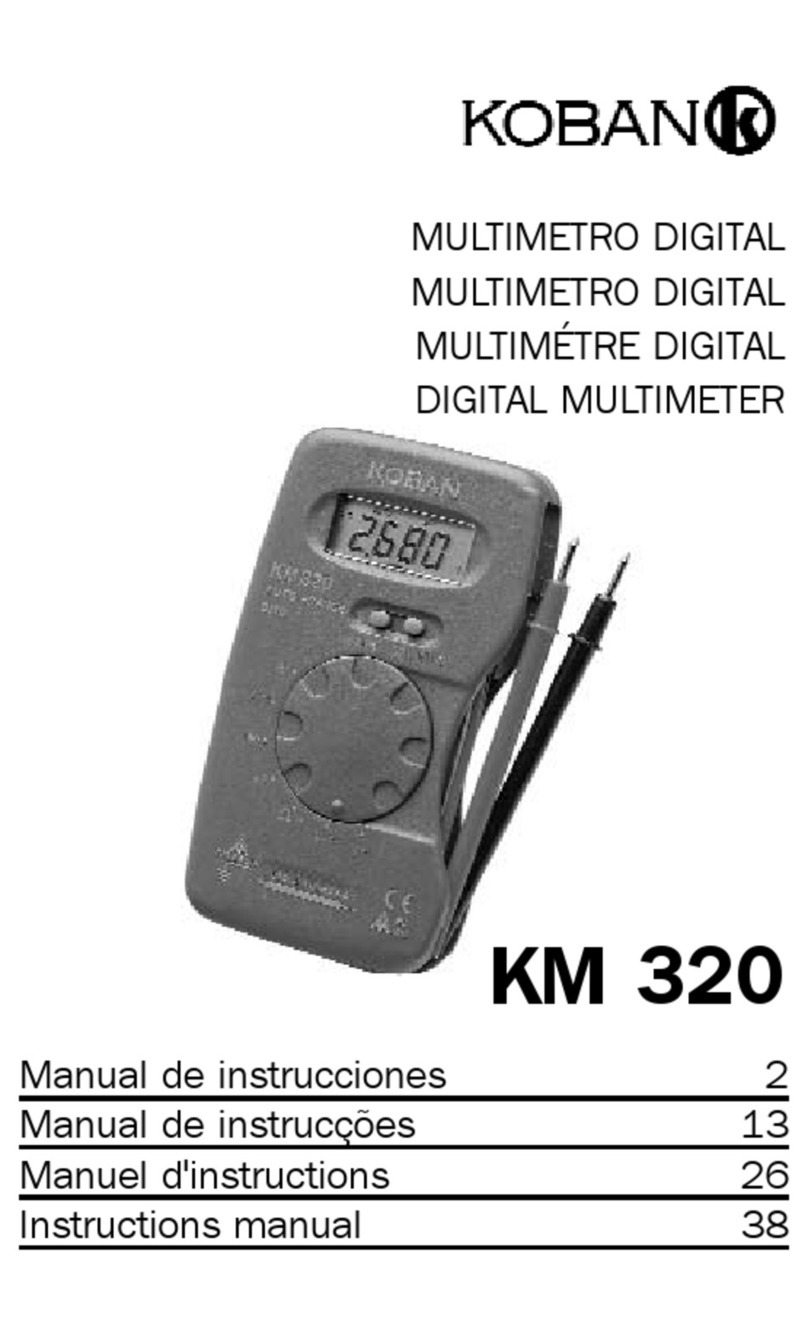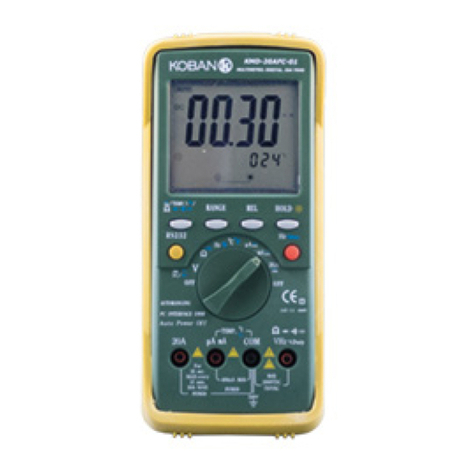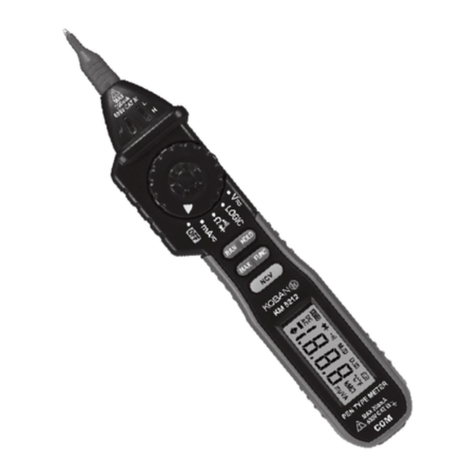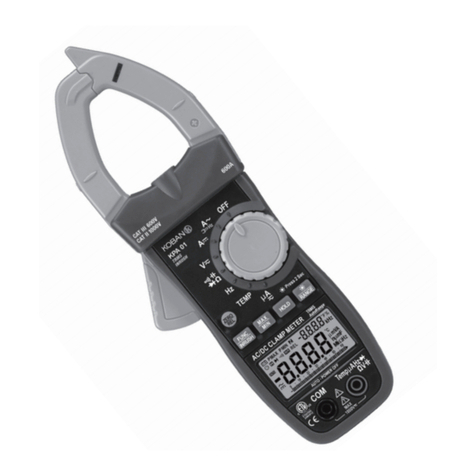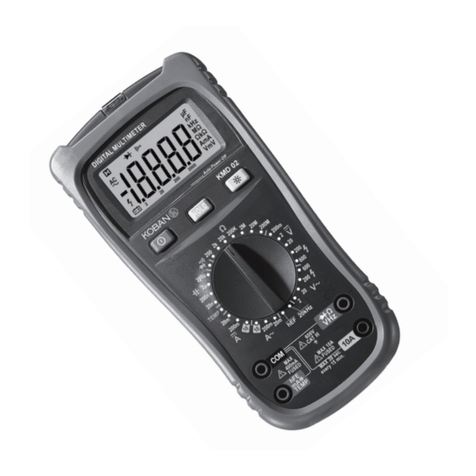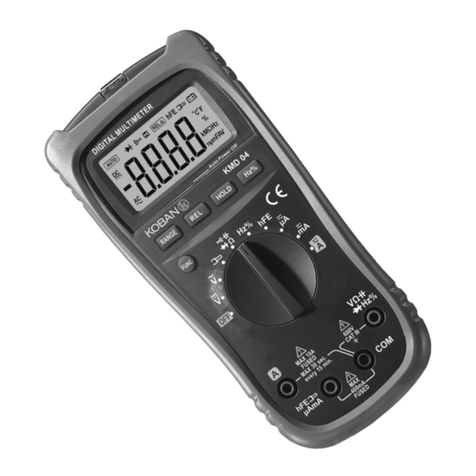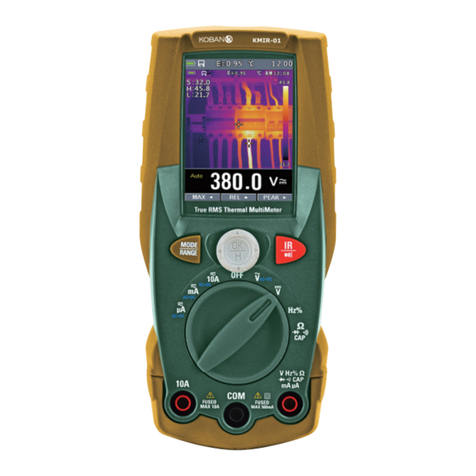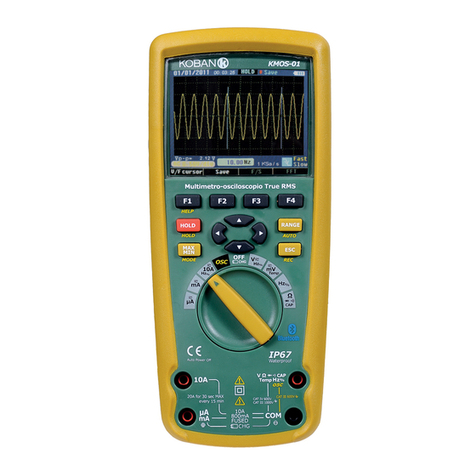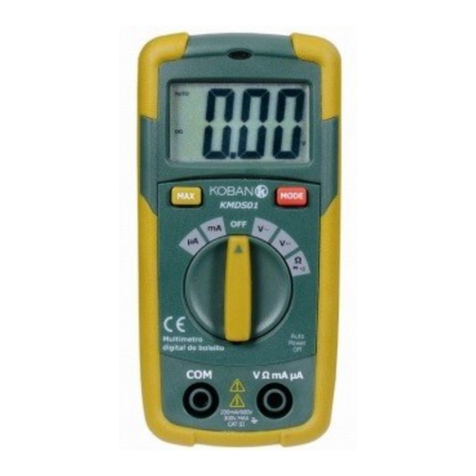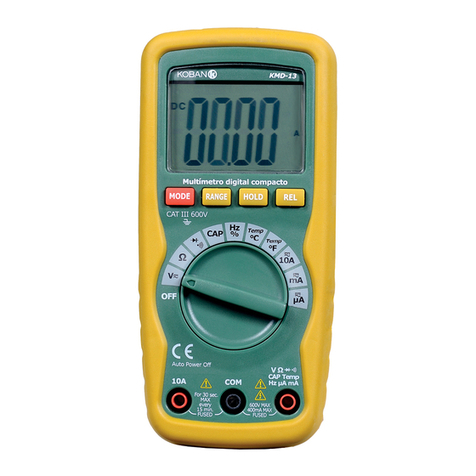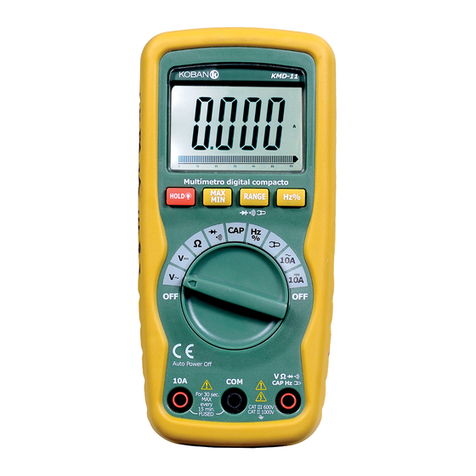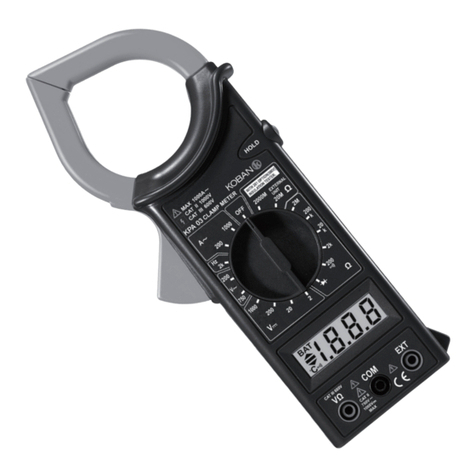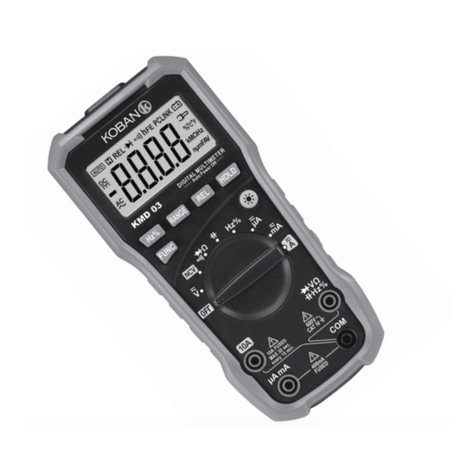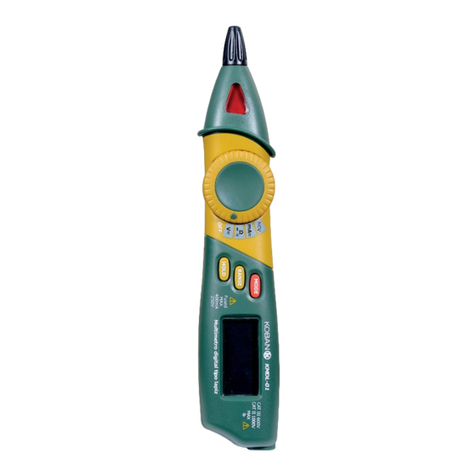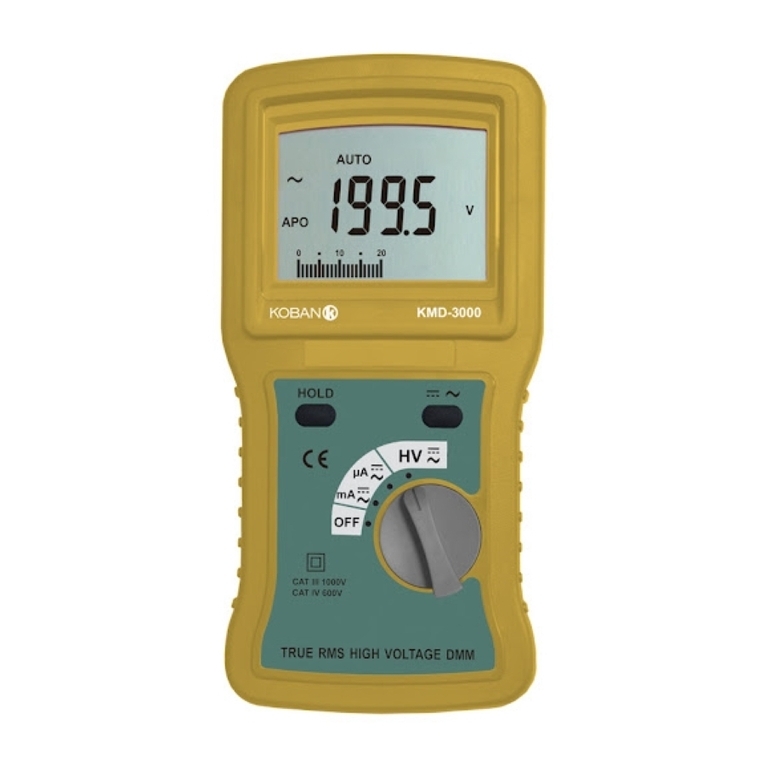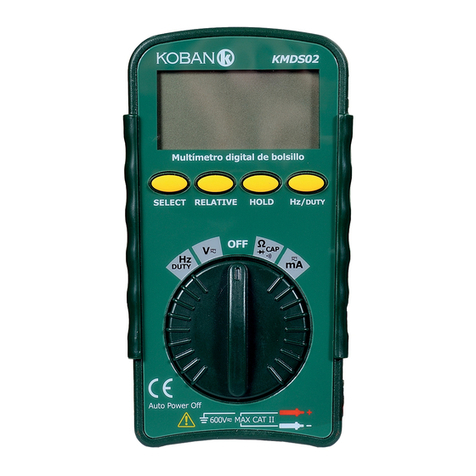
KMD-S04
7 www.grupotemper.com
explosive, inflammable and strong magnetic field. The performance of the Meter
may deteriorate after dampened.
When using the test leads, keep your fingers behind the finger guards.
Disconnect circuit power and discharge all high-voltage capacitors before testing
resistance, continuity, diodes or capacitance.
Replace the battery as soon as the battery indicator appears. With a low
battery, the Meter might produce false readings that can lead to electric shock
and personal injury.
Remove the connection between the testing leads and the circuit being tested,
and turn the Meter power off before opening the Meter case.
When servicing the Meter, use only the same model number or identical electrical
specifications replacement parts.
The internal circuit of the Meter shall not be altered at will to avoid damage of the
Meter and any accident.
Soft cloth and mild detergent should be used to clean the surface of the Meter
when servicing. No abrasive and solvent should be used to prevent the surface of
the Meter from corrosion, damage and accident.
The Meter is suitable for indoor use.
Turn the Meter power off when it is not in use and take out the battery when not
using for a long time. Constantly check the battery as it may leak when it has
